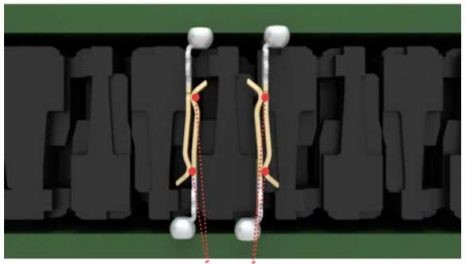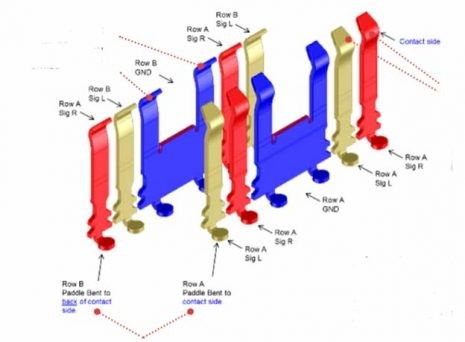|

Molex Mirror Mezz Pro Connector Selected for Open Compute Project
In 2009, Facebook set out to optimize its data centers to better handle consumer demand as its platform grew in popularity. The company assembled a small team to create the world’s most efficient data center, and that team was able to increase energy efficiency by 38% while cutting operating costs by 24%.
Facebook made these designs public in 2011, then, in collaboration with companies such as Intel and Goldman Sachs, helped launch the Open Compute Project (OCP). Over the past decade, OCP has worked to replicate the collaborative open-source software environment for computer hardware, an environment in which cross-functional engineering teams create reference designs that accelerate the pace of innovation for the data center.
Today, more than 200 companies including Molex have joined the OCP community to solve difficult and unique challenges, applying a broader perspective to rapidly innovate, and ultimately make hyperscale infrastructure more efficient, flexible, and scalable.
A New Artificial Intelligence Accelerator Solution
The world is experiencing an explosion of new artificial intelligence (AI) applications that improve our everyday lives – from multiplayer gaming to cybersecurity protection, disease detection to supply chain optimization. Today’s cloud computing solutions just aren’t optimized for tomorrow’s AI workloads.
The Open Accelerator Infrastructure (OAI) group, a subgroup of OCP’s Server group, took up the task of defining an open standard for accelerator infrastructure systems comprised of accelerator modules, a baseboard, tray, and chassis to handle these intense workloads. In 2019, the group released their Open Accelerator Module (OAM) v1.0 standard incorporating the Molex Mirror Mezz mezzanine connector.
The design specification called for a high-density board-to-board connection from the GPU module to the baseboard capable of handling 56 Gbps. The connection had to be small enough to leave room for other key components, enable a high differential pair count, and maintain extremely low crosstalk levels. Molex Mirror Mezz connectors have been specifically designed for such tight constraints. With an exceptionally high density of 107 to 115 differential pairs (DP)/in² and 56G-PAM4 signal integrity requirements, these connectors were designed to handle the data demands of intense AI applications.
Mirror Mezz Innovation
The Molex Mirror Mezz connector is a hermaphroditic interface, meaning the connector mates to itself, reducing part numbers, simplifying bills-of-material, and consolidating supply chain efforts. It’s available in a variety of mating heights, from 11.00mm to 5.00mm, and it can be used with flex cable links to increase board-to-board distance without sacrificing performance.
Although small in stature, Mirror Mezz connectors are mighty: packed with innovative design features that enhance reliability and maintain high speed signal integrity.
The shrouded housing helps protect the pins and gives the user blind mating guidance, virtually eliminating the possibility of incorrect connector mating.
The pins are shaped to improve connection reliability by providing constant 2-point contact. These contact points provide a force on one another that resist vibrations and thermal drift.
Mirror Mezz pins “lean” against one another, resisting vibrations and thermal drift. (Image courtesy of the Mirror Mezz datasheet.)

Mirror Mez Pins
The connector is attached to the printed circuit board (PCB) using a proven, reliable, and easy to assemble ball grid array (BGA) matrix.
Unique geometry features in the terminal design and solder ball maintain tighter impedance control.
Wide ground pins provide signal isolation from neighboring differential pairs.
The bottom paddles and the centers of each contact point are at a slightly different pitch and offset from one another to further reduce crosstalk.
This design of the pin configuration and corresponding signals illustrates the pattern found to optimize electrical characteristics. (Image courtesy of the Mirror Mezz datasheet.)

Mirror Mez pin configuration
Beyond 56 Gbps: Overcoming New Challenges with Mirror Mezz Pro
The innovative characteristics of the Mirror Mezz connector helped advance the first generation Open Accelerator Module (OAM) design, but OCP is not stopping there. The OCP Open Accelerator Infrastructure (OAI) group is committed to advancing the accelerator capabilities, aiming for a new specification that support speeds of 112 Gbps or more.
The current Mirror Mezz connectors have some margin to 112G, but Molex has created a new and improved version to specifically address the challenges that 112G-PAM4 bring: Mirror Mezz Pro.
Molex designed Mirror Mezz Pro to improve performance and signal integrity at twice the maximum data rate while fitting the original compact PCB footprint. The size of the new connector’s BGA has been reduced to minimize return loss at higher frequencies, and the terminal and housings have been tuned to minimize impedance variation. The result: 112 Gbps performance with the same mechanical and electrical robustness customers have already come to know.
Looking to the Future
Molex is honored that Mirror Mezz Pro has been selected by the Open Compute Project’s OAI group as the board-to-board mezzanine connector standard for OAM v1.5. We are thrilled to support the many collaborators that comprise OCP and welcome the opportunity to push the limits of next generation hyperscale infrastructure. The Mirror Mezz Pro release is the latest in a long line of innovations that Molex looks to unveil through its collaboration with OCP.
See also:
Mirror Mezz Pro Mezzanine Connectors | Experience Molex
OCP | Experience Molex
Going Modular: Empowering Data Center Transformation | Experience Molex
OCP accelerator module design specification_v1p5_Final_20220223.docx (opencompute.org)

|





